It is essential to keep your tires adequately filled with air. Underinflated tires can suffer from overheating, uneven wear and less efficiency. However, it can sometimes be inconvenient to take your flat tires to a professional. In that case, it is helpful to know how to fill a tire using an air compressor on your own.
The first step is to make sure you have the correct tools for the job. Otherwise, you won’t be able to safely and effectively fill your tire to the proper specifications. You will need several tools, including:
The two most common types of tires you can fill at home with an air compressor are car and bike tires. You can also use an air compressor to fill the tires of dirt bikes, lawnmowers, tractors and other equipment. Here are the basic steps for filling tires with an air compressor:

While the basic method of filling tires is the same, knowing how to fill a bike tire with an air compressor is slightly different from a car tire. There are several variations, including:
Understanding these differences is vital in knowing how to service your bike tire with an air compressor.
Air compressors can help refill tires on cars, bikes and other equipment. There are some differences across each tire type, but the process is mostly the same. With Quincy Compressor, you can find the perfect air compressor to fill up any of your flat tires on your own. Contact us today for more information, or explore our portable air compressor options!
There are some differences across each tire type, but the process is mostly the same. With Quincy Compressor, you can find the perfect air compressor to fill up any of your flat tires on your own. Contact us today for more information, or explore our portable air compressor options!
You never know when you may experience a flat tire. It can happen to anyone at the most inconvenient time. Maintaining correct tire pressure affects a tire’s wear and improves its performance. Luckily, you can easily inflate almost any tire at your job site if you have an air compressor. Read on to learn how to use an air compressor on your flat tire.
You need to know how much air pressure must go into the tire. Most construction vehicles need at least 100 pounds per square inch, or PSI, in each tire. The exact amount might vary depending upon the axle load, number of tires per axle, and weather. Check the vehicle’s owner’s manual for the proper tire pressure amount.
Avoid using the PSI number found on the tire’s sidewall since that expresses the maximum amount of pressure. You need this information to know what type of air compressor to get. A smaller air compressor tank keeps the pressure between 100 to 150 PSI.
A tire gauge can tell you how much compressed air your tires need to have added. If you put too much air into tires, you can experience performance and handling issues. If you don’t put enough air into the tires, they can experience extra friction that raises the rubber’s temperature. Heat is harmful to tires and can cause damage to the steel cords inside. Many tire manufacturers state that for every 3 PSI below the recommendation, you burn 1 percent more fuel and add 10 percent extra tire wear.
When filling up the tires, try to do so when they’re cold. Cold temperatures can give you a more accurate reading. Hot tires show higher air pressure when you use the tire gauge. If you get a flat tire while driving, wait about 30 minutes for the tire to cool. If this is not an option, inflate the tires to 3 PSI over the recommended amount.
If this is not an option, inflate the tires to 3 PSI over the recommended amount.
Each tire should have a stem cap screwed to the top of the valve stem. Remove the cap and put it to the side, but make sure you don’t misplace it. When the cap is off the valve, even if it’s just for a minute, some of the leftover air could escape. Avoid removing the cap until you’re ready to use the compressor.
Typical air compressors run on electrical power. Plug in the air compressor to let it accumulate with air. Smaller units have a two-prong plug, while medium and larger compressors may need a three-prong plug. Make sure you’re using outlets with the correct voltage for the compressor. Running the compressor on the wrong circuit can blow the compressor, circuit, or both. Once you turn on the compressor, you will hear the compressor motor begin to work. Portable units have tires, so you can easily move them around.
Try to situate the compressor near the flat tire since you cannot move the vehicle.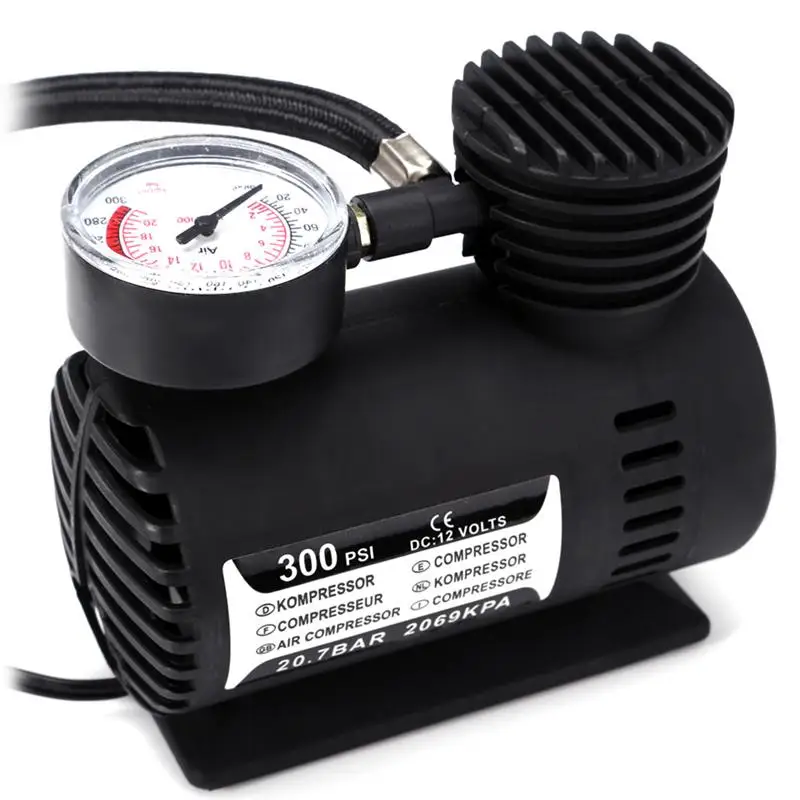 Attach the air hose to the compressor and include the quick coupler at the end. This fastener lets you push air into the valve stem. If there’s a safety position on the nozzle, make sure that you activate it. Secure the hose to the valve stem and turn on the machine.
Attach the air hose to the compressor and include the quick coupler at the end. This fastener lets you push air into the valve stem. If there’s a safety position on the nozzle, make sure that you activate it. Secure the hose to the valve stem and turn on the machine.
Depending upon how flat the tire is, filling the tire up with air may take some time. Many air compressors have gauges that guide you, so you add the correct amount of air. Some inflators even turn off automatically when the desired air pressure is reached. Digital inflators are another option, and they give you a more accurate reading. Avoid walking away from the compressor while it is running, as you don’t want the tires to overinflate.
While filing up the tire, check the tire pressure occasionally. Most digital inflators automatically monitor the pressure and shut off when the desired pressure is reached. If you accidentally add too much air, push down on the tire gauge to release some of the air.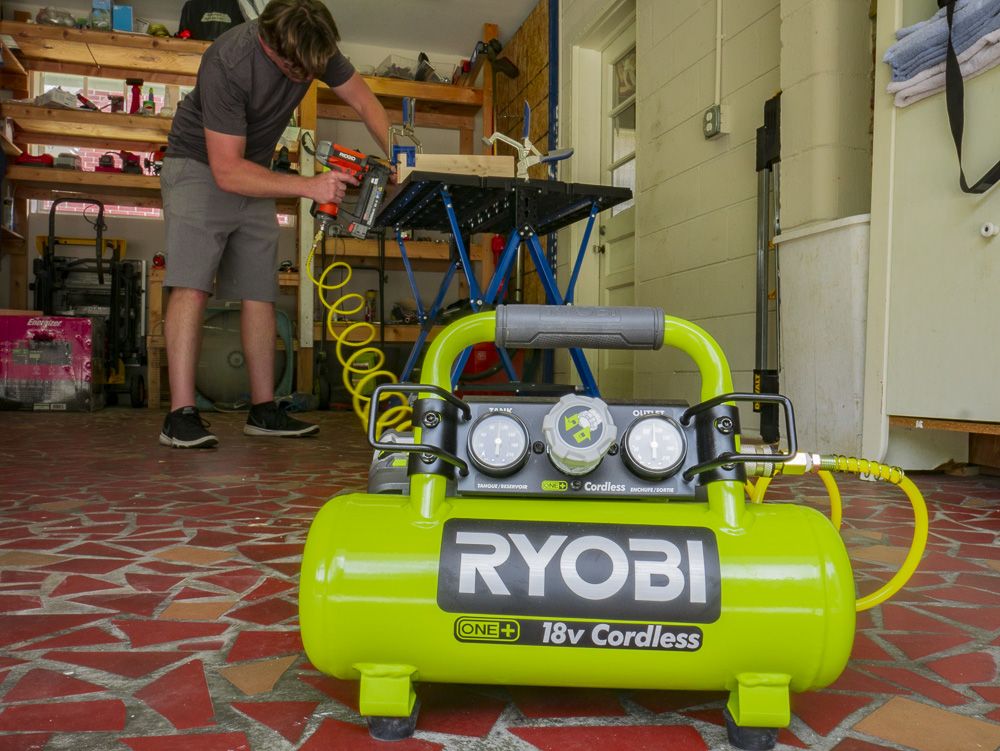 When you have the right amount of air, remove the hose from the compressor. You might hear a hissing noise when you remove this piece. Don’t worry as this is perfectly normal. Put the stem cap back on the valve.
When you have the right amount of air, remove the hose from the compressor. You might hear a hissing noise when you remove this piece. Don’t worry as this is perfectly normal. Put the stem cap back on the valve.
If you are unlucky enough to experience a flat tire, don’t worry. You can easily use an air compressor and a few simple tools to inflate the flat tire. By following a few simple tips, you can get back on the road in no time.
August 23, 2017
Buying a compressor and just pumping up tires is boring. Much more interesting to turn it into an audio system!
Skillful and crazy hands will never be transferred to Russia! What motorists just do not do with tire compressors. Semi-automatic pumping systems, klaxons, paint systems and much more. Users of the popular Drive2 car community are happy to share their completed projects to turn a tire inflator into something more.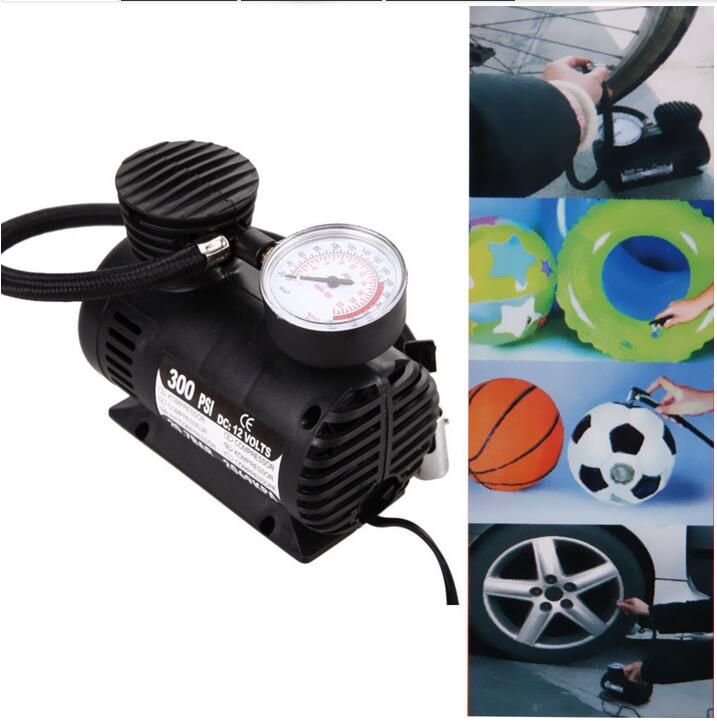
One of the owners of the powerful AGR-160 compressor connected it to the receiver, built the compressor itself under the left wing of the UAZ Patriot. After adding a pressure switch to control pressure drops and a switch-on switch, a semi-automatic system was obtained for pneumatic tools, tire inflation and air supply to the horn for a powerful horn.
Compressor performance characteristics:
 1
1 Project details on Drive2
The owner of a Mitsubishi Delica was dissatisfied with the car's signal strength and decided to install an air horn. The air supply was entrusted to a compressor with an AGR-8LT receiver with a maximum pressure of 8 atmospheres. The compressor was installed in the luggage compartment of the minivan and connected by a hose to the horns in the engine compartment. The compressor was controlled from the dashboard of the car using an additional relay.
Compressor performance characteristics:
 1
1 Since the AGR-8LT car compressor is equipped with two quick-release connections, in addition to supplying air to the horns, it is also able to perform its main function - to pump up the car's wheels.
Project details on Drive2
Compressor buyers are not always satisfied with the standard layout of the device. Community member Drive2 redesigned an AGR-75 twin piston compressor and moved the pressure gauge from the hose to the top of the compressor and tucked the hose inside the housing to create a compact Toyota Camry wheel inflation system.
Compressor performance characteristics:
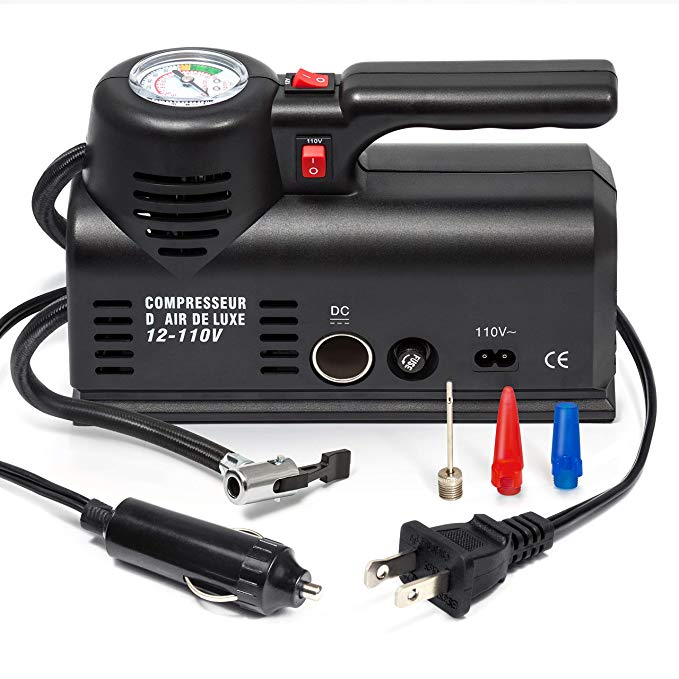 4 m
4 m Project details on Drive2
The only thing you should not use car compressors for inflating tires is car painting. Of course, no instruction and guarantee will prohibit experiments at your own peril and risk. But it is worth remembering that craftsmen put all the experiments on old compressors, which are not corny to be sorry for. The results, judging by the reports, are unpredictable: one car owner somehow managed to partially paint over the door, another burned 4 compressors one after another.
Otherwise, autocompressors are great for supplying an air signal to horns and working with pneumatic tools.
 com.ua
com.ua Tire compressors are becoming increasingly popular among motorists, as they greatly facilitate the process of inflating tires. They have successfully replaced hand and foot pumps, which are used less and less. The biggest advantage of electric compressors is that it takes very little time and no physical effort to inflate tires.
However, so that everything went well and without problems, it is important to know how to use the car compressor correctly. So you can achieve maximum efficiency from the device with minimal effort and time.
To begin with, it is worth familiarizing yourself with the main types of automotive compressors. Since it is important to know the features of different models.
Compressors according to the principle of operation are divided into: piston, diaphragm and rotary.
The reciprocating compressor is the most popular choice. The principle of operation of devices of this type is extremely simple and somewhat resembles the mechanics of a classic internal combustion engine.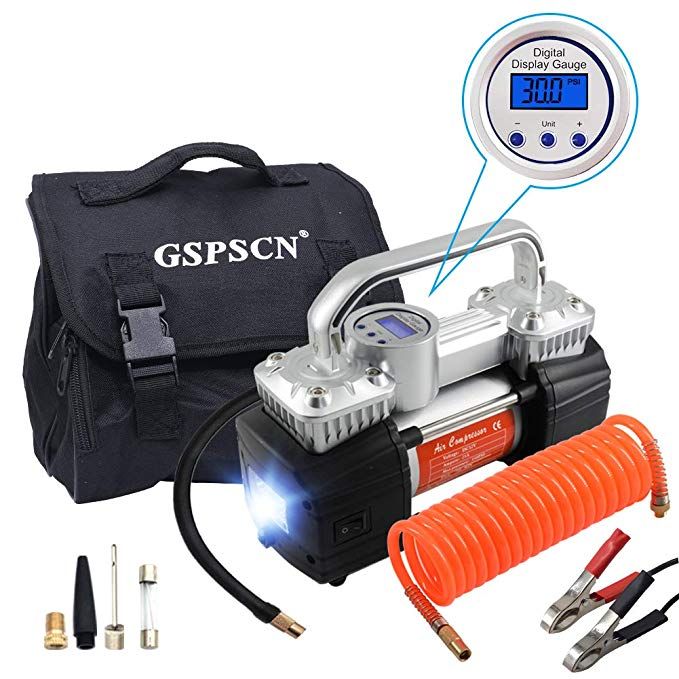 Reciprocating air compressors use two valves. Of these, the first releases air during the main stroke of the piston, and the second is necessary in order to supply air to the cylinder during the reverse movement of the pusher.
Reciprocating air compressors use two valves. Of these, the first releases air during the main stroke of the piston, and the second is necessary in order to supply air to the cylinder during the reverse movement of the pusher.
Diaphragm Compressor - small size and metering, quiet operation. They have a completely different design. Their principle of operation is also quite simple: the working rod, with the help of a special cam mechanism, deforms the rubber plate during its movement. As a result, the air inside the closed cavity to which this plate adjoins begins to compress, and then enters a special outlet pipe under high pressure. During the reverse movement of the stem, the outlet valve closes, as a result, gas is sucked in through the inlet pipe.
The rotary compressor is a separate type that is usually used where high performance is needed: tire inflation of SUVs, trucks, etc. The principle of operation of such a device is based on the use of a special rotor in the design. This results in very high performance. However, they also have certain disadvantages: large mass and dimensions, the need for regular maintenance, as well as a rather short working life. Therefore, this type of compressor is not very popular, despite the good and fast work.
This results in very high performance. However, they also have certain disadvantages: large mass and dimensions, the need for regular maintenance, as well as a rather short working life. Therefore, this type of compressor is not very popular, despite the good and fast work.
Every motorist should be able to use a car compressor, especially since there is nothing complicated about it. It is only important to do everything consistently and correctly, following the recommendations of specialists. Then everything will go quickly and without emergency situations.
To begin with, before starting to inflate tires, it is worthwhile to figure out the type of power supply for the device. The compressor power cable can be connected both to the car's on-board network through the cigarette lighter socket, or directly to the battery. This should be indicated in the instructions for the device. If you don't know, then look at the wire. Most cheap models usually have only one connection option - through the cigarette lighter.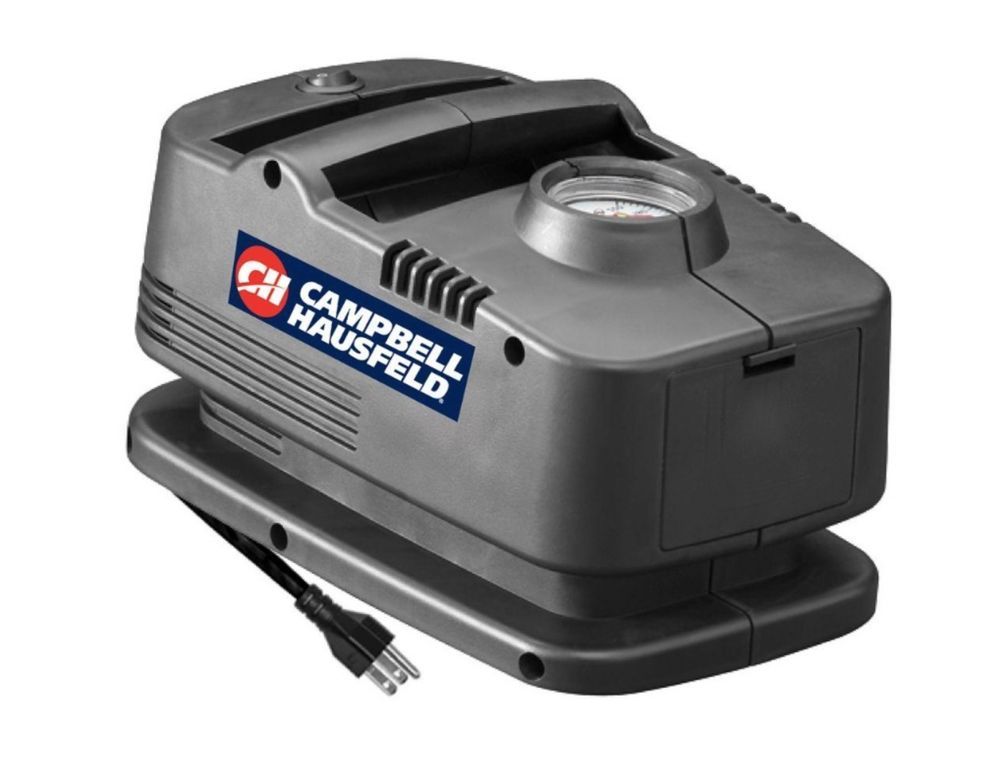 More expensive models can have two types of connection at once, they can have alligator clips on the wire for connecting to a car battery, and a cigarette lighter socket. Naturally, compressors connected to a battery usually have more power. Such models are more productive and efficient.
More expensive models can have two types of connection at once, they can have alligator clips on the wire for connecting to a car battery, and a cigarette lighter socket. Naturally, compressors connected to a battery usually have more power. Such models are more productive and efficient.
Once you have figured out the type of connection, you can proceed directly to the most important process.
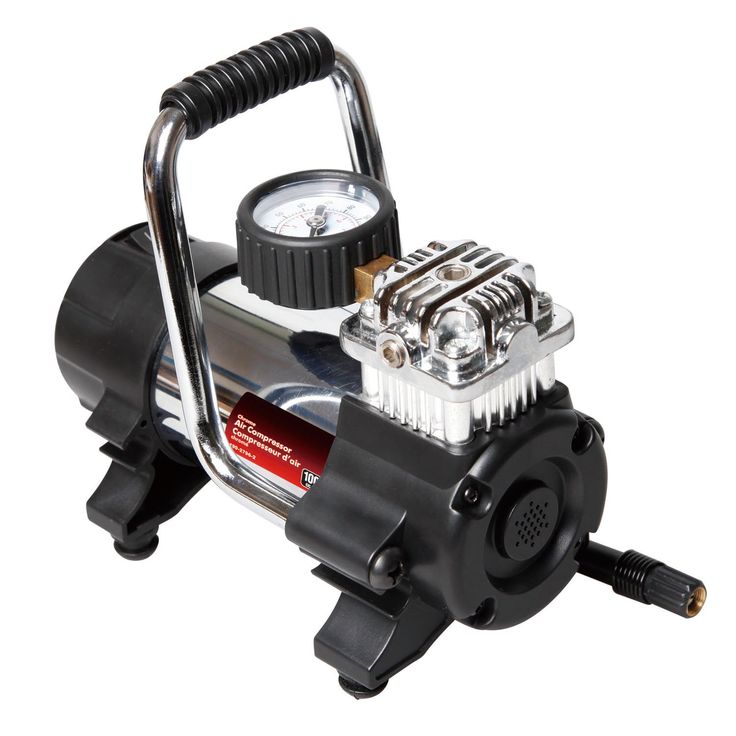 Car tires should be inflated to the level specified by the car manufacturer.
Car tires should be inflated to the level specified by the car manufacturer. Also remember that it is recommended to inflate tires or check the level of pressure in them in the same conditions in which the car is usually used. Rubber should not cool down after a ride. To achieve the optimal temperature, experts recommend waiting for about half an hour after the trip, taking into account weather conditions. If you do not follow this rule, the pressure may not be as it should be. Since temperature has a great influence on the level of pressure inside the wheel. For example, if you pump up tires in cold weather, then when the car gets into a warmer room, due to a sharp change in temperature to positive, the pressure inside the wheel will rise. This, in turn, can cause rather sad and unpleasant consequences.
When using a membrane compressor, pay attention to the following features and recommendations:
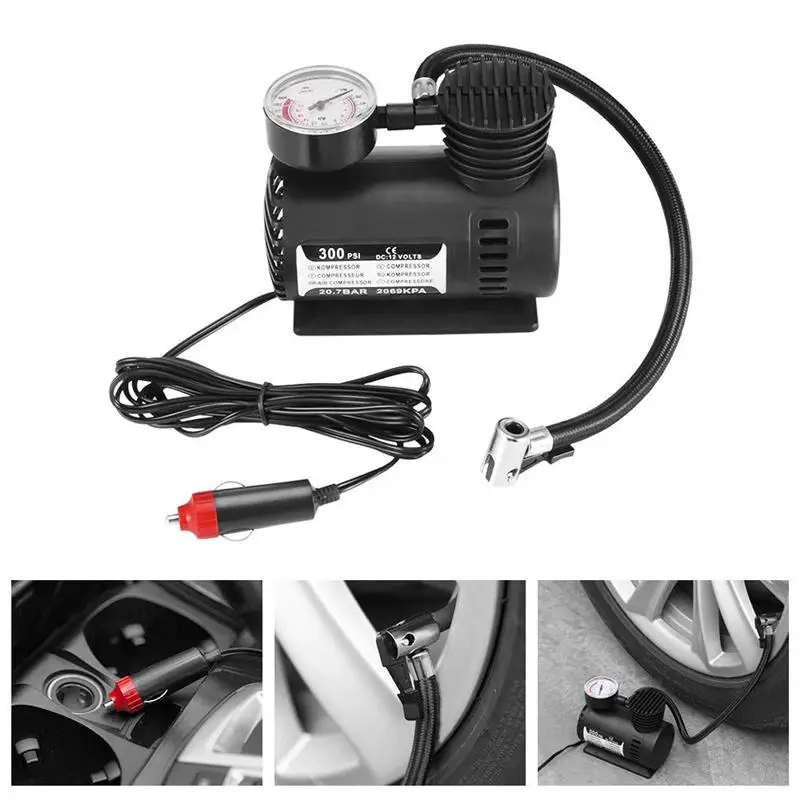 They are suitable for simple household use from time to time, such models are not suitable for service stations, as they will quickly fail under heavy load.
They are suitable for simple household use from time to time, such models are not suitable for service stations, as they will quickly fail under heavy load. Piston compressors do not have these problems. These devices work stably in any weather and temperature conditions, both in frost and in heat. However, they will also not be able to work for a very long time without a break, since a very large load will fall on the piston, which will negatively affect the duration of work. However, they can work longer without interruption than their membrane counterparts.
As you can see, there are no difficulties in learning how to use an electric compressor. Everything is simple here, connect to power, then connect to the wheel and turn it on. The main thing is to monitor the pressure level and follow the recommendations of the machine manufacturer. The choice of a particular model depends on the size of the wheels of your car, personal preferences and your financial capabilities. In our online store 130.com.ua you can buy a car compressor in Kyiv, Odessa and Kharkov at a bargain price. Delivery is carried out to all cities of Ukraine.
TOP-3 autocompressors
Looking for the best quality autocompressor? This rating of autocompressors is compiled on the basis of such parameters as: high demand with positive feedback from our customers, high-quality manufacturing - no manufacturing defects and service calls, as well as official warranty and post-warranty support in Ukraine.